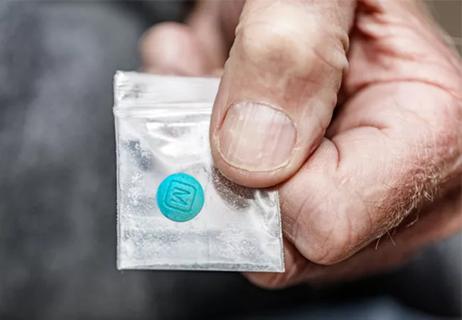Clinical judgment is foundational to appropriately prescribing

When the U.S. Centers for Disease Control and Prevention published its 2016 Guideline for Prescribing Opioids for Chronic Pain, the aim was to help primary care physicians establish sound practices and reduce the sweeping over-reliance on opioids that fueled a national addiction crisis.
Advertisement
Cleveland Clinic is a non-profit academic medical center. Advertising on our site helps support our mission. We do not endorse non-Cleveland Clinic products or services. Policy
To some extent, it worked. Opioid prescribing, which peaked nationally in 2012, dropped from more than 214 million in 2016 to under 143 million in 2020. But fallout from publication of the guideline also set off a new era of suffering, as some clinicians, regulatory professionals and insurers misapplied the advice, and some state legislatures used it as the basis for new law.
A revised document expected to be released this year seeks to address those laws and to reflect emerging research. The most notable differences in the update are the removal of suggested dosage ceilings and added language emphasizing that the guideline should not be used to establish hard-and-fast rules. [Editor’s note: The revised document referred to at time of publication has since been adopted.]
“Guidelines cannot be all-encompassing or perfect,” says Richard Rosenquist, MD, Chairman of Pain Management in Cleveland Clinic’s Anesthesiology Institute. “We need to read them carefully, apply them appropriately, and ultimately remember that our job is to take care of the patient and do what we think is medically indicated to achieve the goals for that particular patient.”
Effective and compassionate patient care depends on taking time to know patients and bring clinical expertise to each case, says Dr. Rosenquist.
When the 2016 document was published, it provided an answer for primary care physicians frustrated about a lack of consensus on how to appropriately utilize opioids with patients in pain. Authors noted that from 2007 to 2012, opioid prescriptions per capita had increased 7.3%, and that prescribing rates had increased more among generalists than for those in specialty practice.
Advertisement
Prescribing rates also varied geographically “in ways that cannot be explained by the underlying health status of the population, highlighting the lack of consensus among clinicians on how to use opioid pain medication,” the authors wrote.
The guideline covered care for adult patients in outpatient settings who were not in treatment for cancer or sickle cell disease, or in palliative or end-of-life care. It offered guidance for starting or continuing opioids for chronic pain, drug selection and dosage, and risk assessment.
Key recommendations included:
The guidelines were a sound start for grounding primary care providers, says Dr. Rosenquist, but they were never meant to be used as rigid rules.
“Administrators, people in the legal field and others took guidelines that were intended for a subset in the primary care field and began to broadly apply them,” he says.
Advertisement
Medical ethics stigma and legal consequences began to attach to prescribing outside the guidelines. Insurers cut reimbursements to patients. “All sorts of people came to their own conclusions and started making up new rules or saying that these were laws,” says Dr. Rosenquist. “That hurt patients and created a lot of conflict.”
As a result, many chronic pain patients who had been receiving opioid therapy were subjected to abrupt tapering or discontinuation of medications, causing withdrawal symptoms, depression, insomnia and, in some cases, suicide. An online forum where individuals posted comments for consideration for the 2022 CDC guideline generated more than 5,000 responses; many described the experience of precipitous reductions in medications.
“I have headaches, joint and muscle pain, nausea, diarrhea, exhaustion, irritability and more,” wrote one commenter. “I cannot complete necessary tasks. The life that awaits me is one of agonizing, daily pain and scant functionality. It is not a life worth living and I don’t know what I’m going to do.”
Some doctors dropped chronic pain patients whose long-term opioid use fell outside of the guidelines.
“If a patient is coming to their primary care provider, who has been giving them medications but is not comfortable with doing so, the guideline becomes a reason to say ‘I’m no longer allowed to prescribe these medicines,’” says Dr. Rosenquist.
Such scenarios spurred some patients to seek relief elsewhere, including through street drugs. This is suspected of having contributed to the dramatic increase in opioid-related overdoses, which rose nationally from 47,600 in 2017 to 68,630 in 2020, according to the National Institute on Drug Abuse.
Advertisement
The 2022 draft guideline, which has not been finalized, emphasizes clinical judgment.
“Of utmost importance, this clinical practice guideline provides voluntary clinical practice recommendations for clinicians that should not be used as inflexible standards of care,” the authors write. “The clinical practice guideline recommendations are also not intended to be implemented as absolute limits of policy or practice across populations by organizations, healthcare systems or government entities.”
If adopted, the updated guideline will:
• Add guidance for a wider group of practitioners, including pain medicine specialists and dentists.
• Significantly soften language about starting or increasing dosages to at or above 50 MME a day and eliminate specific limits.
• Emphasize that dosage recommendations are “not intended to be used as an inflexible, rigid standard of care.”
• Add emphasis on careful tapering in cases where clinicians believe patients with long-term use of opioids would benefit by reducing or lowering dosages.
The changes have been by turns lauded and criticized for the easing of language and elimination of numerical dosage limits. In trying to correct for the problems of 2016, it may create new ones, says Dr. Rosenquist.
“With the 2016 guideline, the pendulum was perceived as having swung too far in one direction, although it didn’t. The guideline as originally created did not hamper me from doing what I thought was appropriate. What hurt people was its misapplication,” he says. “Now we have a guideline that has been watered down. It offers a lot more flexibility, but probably is not going to improve patient care. People still don’t need massive doses of opioids.”
Advertisement
For clinicians treating patients for acute, subacute and chronic pain, Dr. Rosenquist says the takeaway is to use guidelines as a tool, not the last word for every case. “Based on what’s written in the guideline, providers may have been pushed to do one thing or another that might not have even been appropriate,” he says. “We have been subjected to people saying, ‘You can’t go beyond these doses.’ But that’s not what the guideline says. It’s important to do what we think is appropriate.
“Not everybody in the world needs opioids, and we certainly don’t need the widespread utilization that was once common,” Dr. Rosenquist adds. “But by the same token, if you really think that prescribing opioids is appropriate, and if the patient has good outcomes and you’re monitoring the care, don’t be afraid to use the medicine in an appropriate way.”
Advertisement

Two NIH grants are looking at developing new antidotes against fentanyl overdose

Urine test strips and point-of-care testing may be key to slowing opioid epidemic

Expert urges action to mitigate the tragedy of fatal overdose

Cleveland Clinic study points to need for new strategies to curb addiction relapse

Study sheds light on how clinicians addressed their patients’ pain and insomnia during the pandemic

A public health tragedy with persistent pathophysiological and therapeutic challenges

Reducing prescriptions may help keep unused medication out of the community

Researchers seek solutions to siloed care, missed diagnoses and limited access to trauma-informed therapies